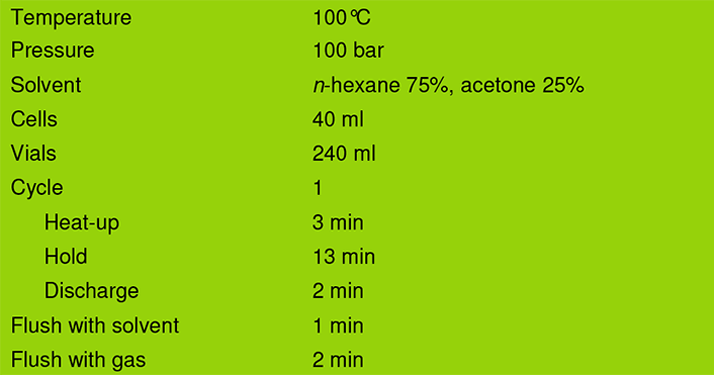Introduction
Polybrominated diphenyl ethers (PBDEs) are flame retardants used in a myriad of applications and are monitored worldwide because of health concerns. In this application, PBDE congeners were extracted from two sediment samples (certified sample and sediment core from Lake Maggiore) according to EPA 3545A [1] using the SpeedExtractor E-914 and determined by GCMS/GC-ECD. The results were comparable to the certified values and showed high reproducibility and recovery.

PBDEs are brominated flame retardants used in a myriad of applications (Figure 1). They are monitored worldwide because of health concerns. Bay and estuary sediments store toxic compounds and are therefore very appropriate sites to evaluate the contamination level of PBDEs in the environment. This application note describes the extraction of PBDEs from two sediment samples using the SpeedExtractor E-914: one certified sediment sample BROC-02 (RIVO, The Netherlands), one real sample from lake Maggiore, Italy. The PBDE congeners were determined by GCMS/GC-ECD.
 Figure 1: Chemical structure of PBDEs
Figure 1: Chemical structure of PBDEsExperimental
Instrumentation: SpeedExtractor E-914 with 40 ml cells, Trace 2000 GC / PolarisQ ion-trap mass spectrometer (Thermo), Trace GC Ultra / ECD-40 detector (Thermo). Sample: Certified reference material (CRM) BROC-02 provided by the Research Institute for Fisheries (RIVO), The Netherlands, sediment sample collected from Pallanza Bay, Lake Maggiore, Italy. The extraction of both samples was performed four-fold using the parameters given in Table 1. This extraction method requires an overall time of 26 min and consumes
approx. 30 ml of solvent per position.
 Table 1: Extraction method of the SpeedExtractor E-914
Table 1: Extraction method of the SpeedExtractor E-914The extract was concentrated and cleaned on a multi-layer silica gel/florisil column. The determination of tri- to hepta- BDEs was performed by GC-MS. The congener BDE-209 was determined by GC-ECD.





